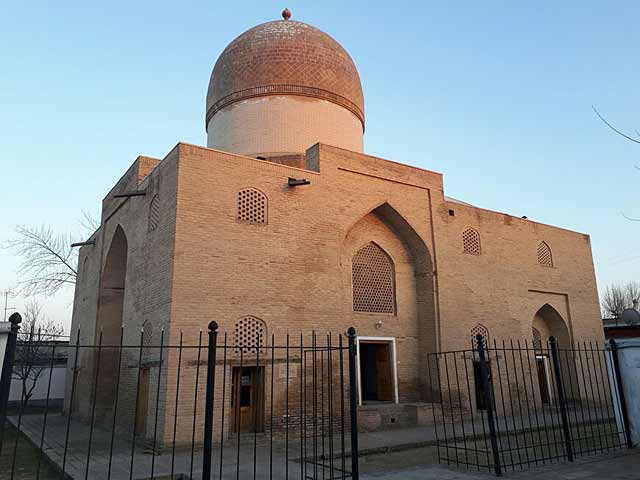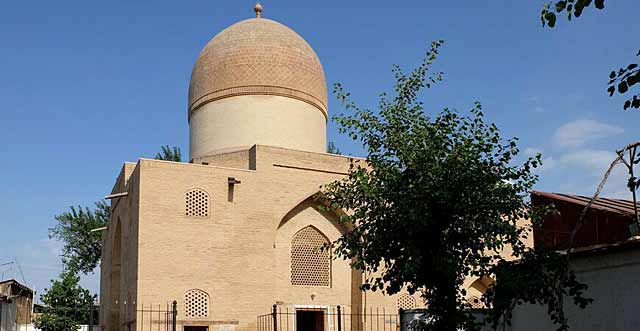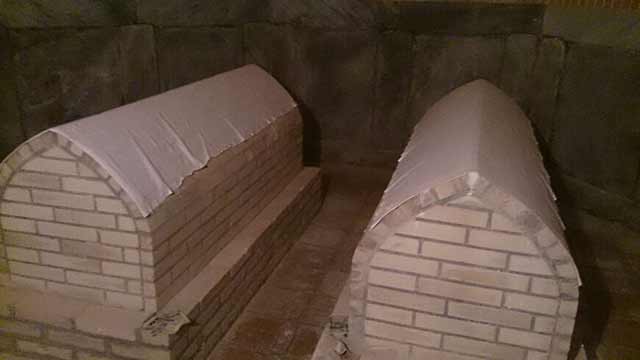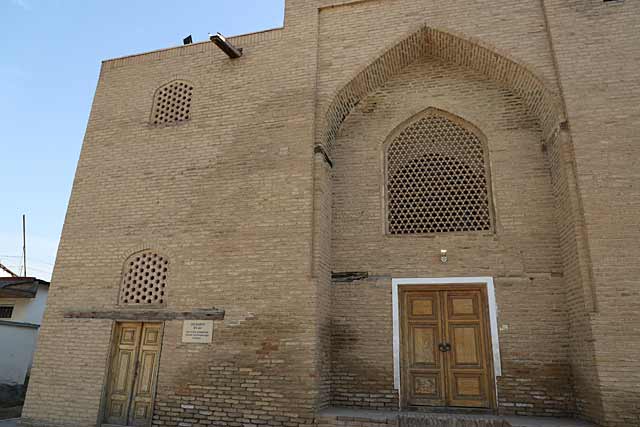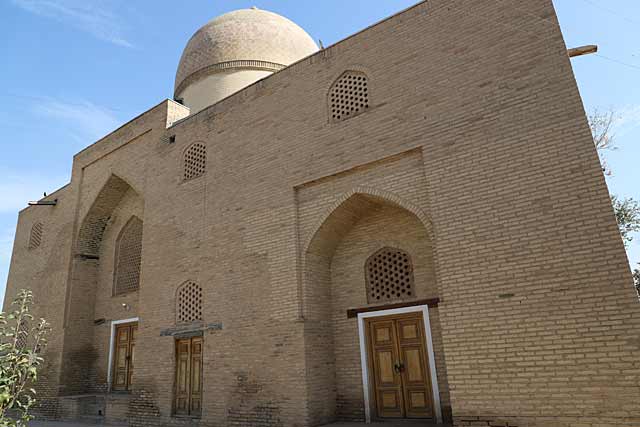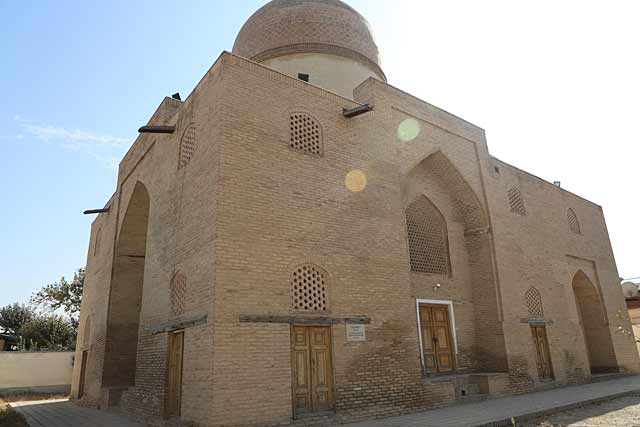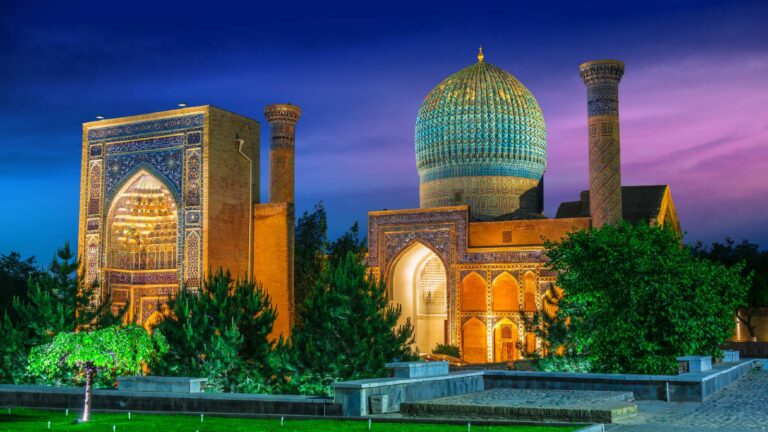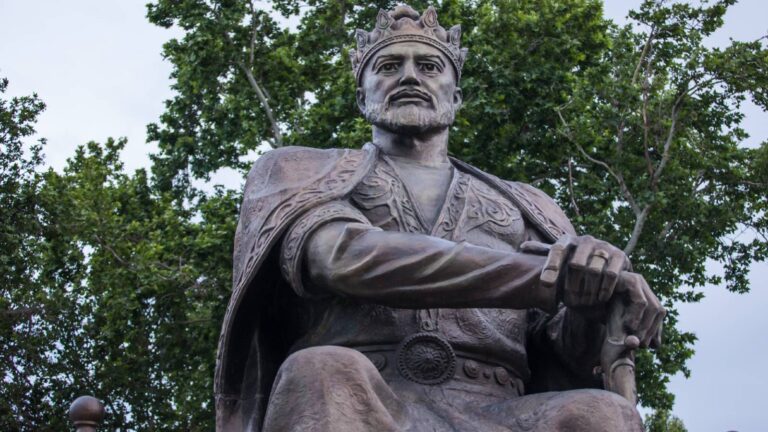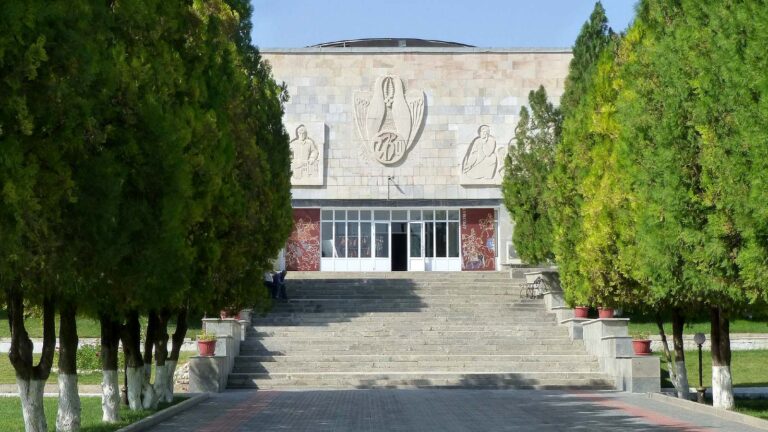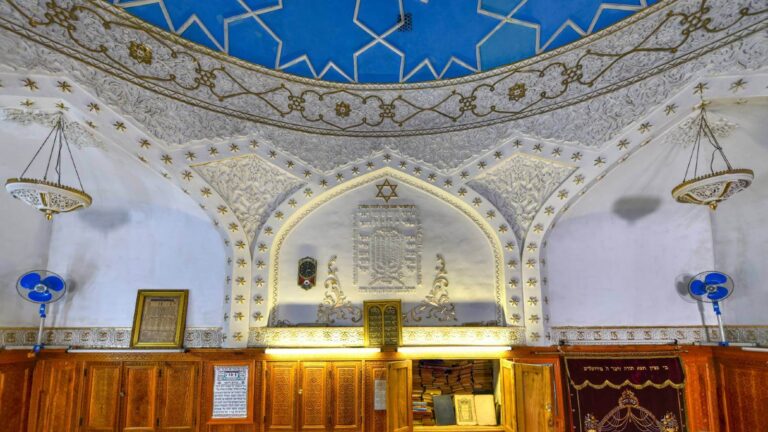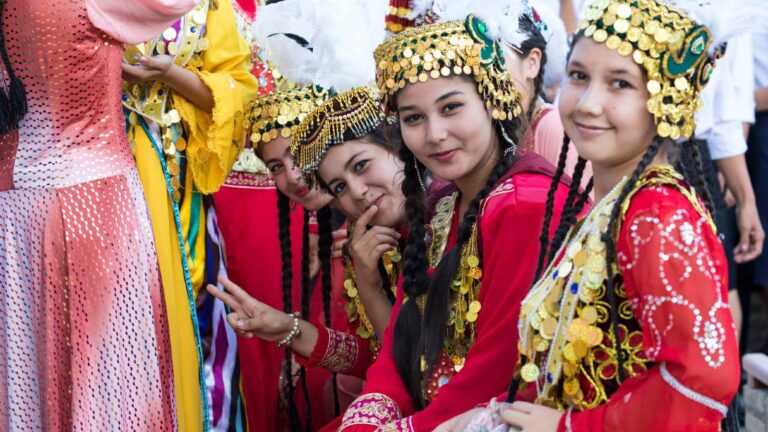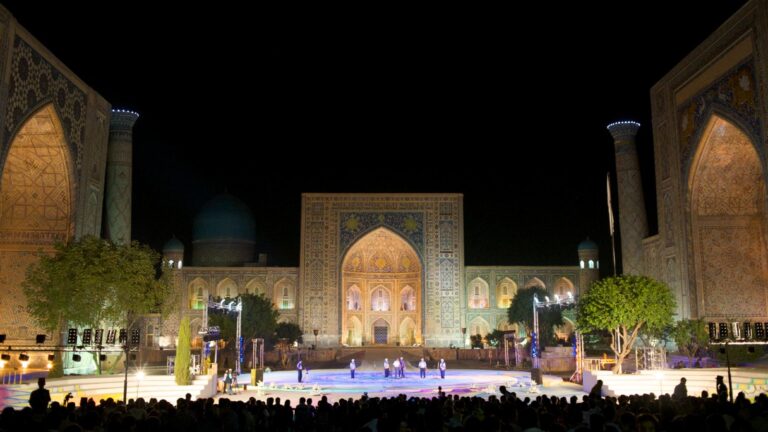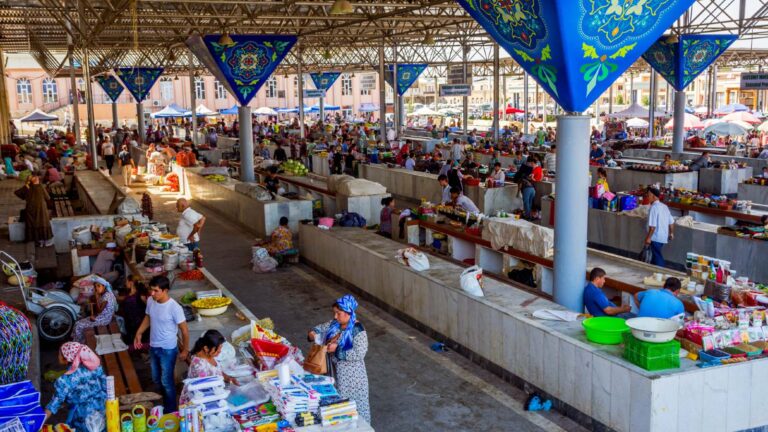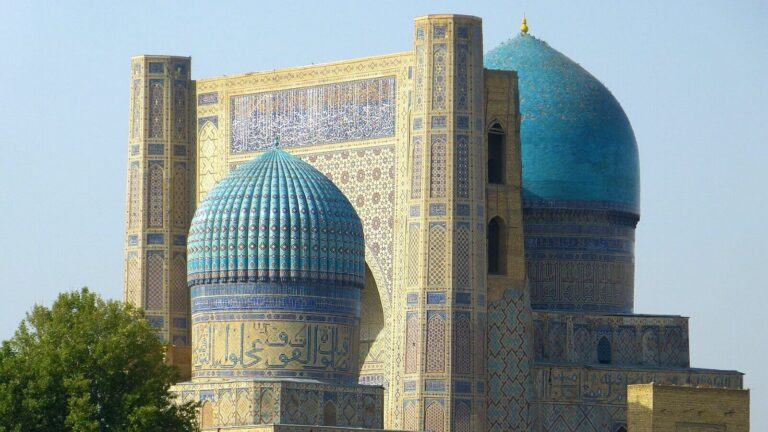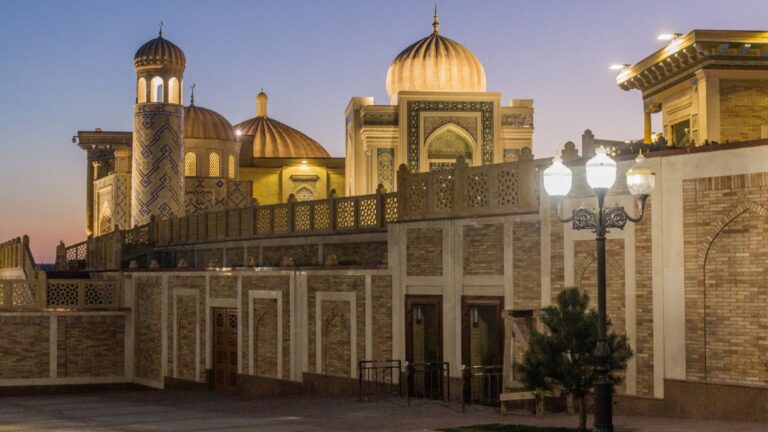Getting There
The Aksaray mausoleum is located in the very center of Samarkand, on Bustonsaroy street, 2, just a few dozen meters from the Gur-Emir mausoleum. Depending on which part of Samarkand you are in, this attraction can be reached by taxi or by bus.
What to Expect
Ak-Saray from Turkic means “ak” – white, “barn” – palace. The Mausoleum was built in the 15th century in Samarkand. It has a rectangular one-domed building that includes a cruciform hall and three rooms of the entrance group. A narrow staircase-like passageway leads to an octagonal marble-clad crypt.
The walls of the mausoleum are decorated with glazed mosaics and the dome is decorated with ornamental painting made using the kundal technique with abundant use of gilding. Unfortunately, exact information about the construction of the Aksaray mausoleum has not been preserved.
Until the beginning of the XXI century, the monument was in ruins, and in 1924-1925 the mausoleum was restored. In 2007, the mausoleum underwent repeated reconstruction and at present the doors of this memorial and religious building are open to tourists.
History
The Aksaray mausoleum is located next to the famous Gur-Emir mausoleum. On the outside the ascetic of Aksaray is lost against the background of the richly decorated Timur mausoleum, but if you take a little time and look inside, you can admire the sophistication of its decoration.
In addition, this landmark is covered with an aura of mystery – no sources have survived that would tell about exactly when this tomb was erected and whose burials are located there. Among scientists, there is a point of view that the building can be attributed to the second half of the 15th century based on the similarity of the features of the architectural style and interior decoration of the walls of the mausoleum with the design features of the Ishratkhon mausoleum, which was erected at that time.
Facilities Available
There is a public toilet and several restaurants, cafes and hotels near the Mausoleum.

